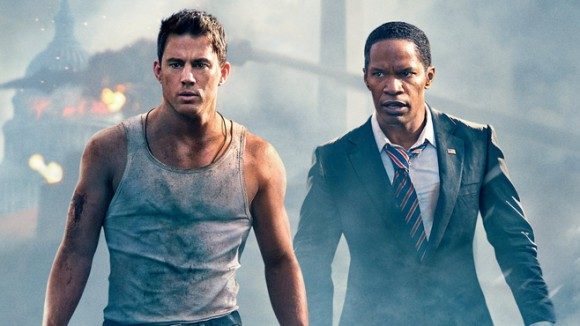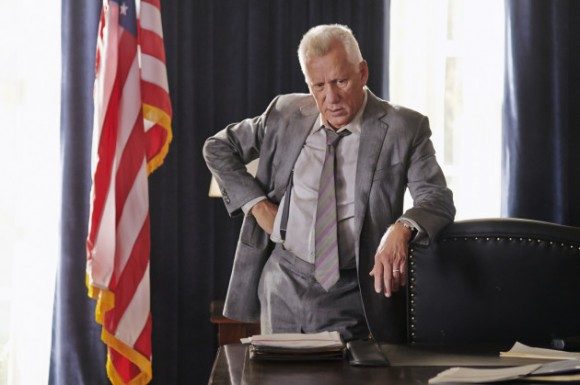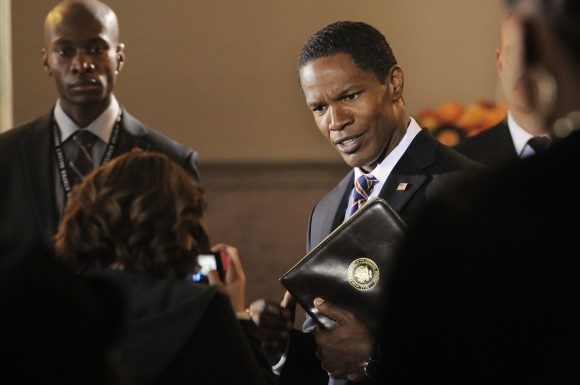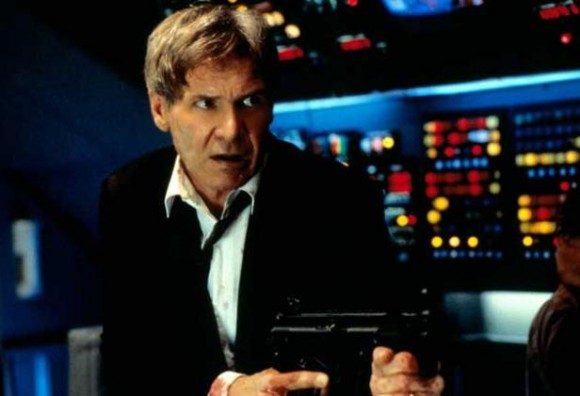Welcome to Revisionist history, where we, unencumbered by the demands of studios and profit margins, try to imagine different and better versions of the movies that are out there. This is not a review; it is a full-spoiler discussion of what works and what doesn’t, particularly from a story/concept standpoint (i.e. unless there’s a particular tic that is distracting, it’s hard to account for a poor acting performance or other failure in execution alone other than to say, “Do better.” Which isn’t very interesting or helpful to anyone.)
This week, we’re revising White House Down.
I have to admit, I went to see White House Down this weekend not because I thought it would be particularly good, but because I thought it was most likely to provoke interesting discussion for this column (beating out The Heat in what was a less than inspiring week of releases). But you know what? It surprised me. Yeah, it’s a stupid action movie that has its fair share of flaws. But it’s also a movie with some genuine heart whose flaws generally exist in details that don’t derail the movie or cause massive plot holes. It knows it’s a stupid action movie, and it does a great job of walking the line between appropriate gravity for the subject matter and not taking itself too seriously. And really, those are the two options with a revision of this movie: extreme seriousness or extreme camp. The latter, I think, devolves quickly into a truly dumb movie that’s less entertaining than the version we’re presented with. So this week’s revision will address some of the big-picture issues in the film while also imagining a more hard-bitten version. Sorry, Channing, no more dodging minigun fire.
To start off, we need to address what’s probably the biggest flaw in the existing movie: motivation. It’s easy to write off the details of why the bad guys do what they do in this existing version because, hey, they’re the bad guys, and we’re given just enough motive – money for Stenz (Jason Clark) and his goons, revenge and potential cancer-induced psychosis for Secret Service Agent Walker (James Woods) – to buy into what they’re doing. But look a little closer and you can see the frayed edges, beginning with the plan itself. For the mercenaries, the plan is obviously money. They may be happy screwing over the government that they feel screwed them to get it, but the endgame is all about the Benjamins. And in that respect, their plan doesn’t seem very well thought-out. Taking the President hostage is a massively high-stakes undertaking, and getting away with it even more so. The focus of the movie is, probably correctly, on the characters involved (this isn’t a heist movie), but we need to be convinced that they have a plan for getting out that’s just as feasible and well-thought-out as their plan for getting in. In fact, their plan for entry is pretty spot on. We never see all the details of how they pulled it off, and we don’t need to. We’re given just enough to suggest that this was sufficiently complex (the microphone bodies being silencers was a particularly nice touch).
So that’s the direction to head in for the mercenaries. Now what about Walker?
This one’s a little trickier to pull off. One notion would be to lean hard into the mental impediment idea. It provides all the excuse needed for why Walker goes off the rails. The problem is that he’s surrounded by some of the most observant, most highly trained guards in the world. Director or not, it’s hard to imagine that whatever oversight is in place wouldn’t have relieved him of duty before a mental instability had progressed so far as to make him plan this escapade, particularly if we’re moving to a more realistic tone. That leaves us with the son, which unfortunately isn’t so strong, either. At least, not so strong as to suggest that he needs to nuke the entire Arab world. Personal revenge? It’s a bit of a stretch considering his son was Special Forces (also, would the Secret Service actually allow someone with that close a personal conflict to guard the President? I think not), but if you’re going to make a stretch, I think that’s the one to make. We’ll come back to this.
This more or less brings us around to the whole “military-industrial complex” part of White House Down, and this is where things start getting really fuzzy. Let’s run through the facts:
- The President is negotiating a peace plan which would remove all U.S. (and perhaps NATO?) troops from the Middle East.
- Supposedly this would piss off weapons manufacturers because they sell to all sides via the black market.
That’s really about it. So there’s a suggestion that this little White House insurrection is being funded by the weapons manufacturers – how Stenz and his crew got Javelin missiles and such – in cooperation, ultimately, with the Speaker of the House and like-minded individuals who feel the U.S. military presence in the Middle East can’t be safely abandoned. But then I thought the plan was to nuke the Middle East? Can’t very well sell weapons to people who are no longer there. So maybe that’s a flier by Walker, his own plan since he knew they would be keeping the President hostage as collateral for their escape plan. Now we have motivation for his actions as well.
You may have noticed that I’ve said nothing about Channing Tatum or Jamie Foxx’s characters yet. That’s because, on the whole, their part in this whole thing pretty well works. We can probably get rid of a little of the Lincoln worship that doesn’t add much to Foxx’s President Sawyer, but Cale’s (Tatum) relationship with his daughter, Emily, is one of the emotional highlights of the movie. The change is more a tonal one that affects details here and there to come more in line with the serious nature of our new version of the film. So probably no more Jamie Foxx kicking a guy in the face and telling him to let go of his Jordans. Sorry.
And that’s really how most of this revision goes. Tone back the camp (no more joyride through the south lawn), tone back the over-the-top action ([Tatum] had to be pretty seriously injured from a few of those falls/explosions/fistfights/
But here’s the problem with that, and where you should really stop reading if you haven’t seen this movie yet, because I’m pretty sure this will ruin your enjoyment of it. Fixing a few of the issues is fine, but ultimately I think it was a very smart decision to not go for the ultra-serious tone.
Why?
Because then it’d be Air Force One.
Think about it. A team of highly trained terrorists infiltrates and successfully holds hostage the President’s house/plane with the assistance of a member of the President’s secret service detail. The President is able to elude his captors, but can’t escape the premises (and later, when safety is attainable, he runs back into danger). Meanwhile, the terrorists hold hostages while the cabinet considers invoking the 25th amendment. Oh and among the hostages? The President’s/President’s protector’s daughter, whom the terrorists specifically threaten in an attempt to control him.
It’s not to say White House Down couldn’t have been good as a realistic movie, just that we’ve seen that movie before (granted, that usually doesn’t stop Hollywood). But beyond the macro-issues we’ve already discussed, there’s little point in laying out a full revision. White House Down lacked subtlety, but most everything else was pretty solid. adjusting tone is all in the execution of the details, and Air Force One is the blueprint for how that might look.
Think White House Down should have been wildly different? Offer your own revisions in the comments.





